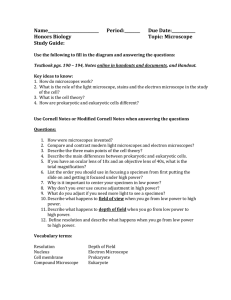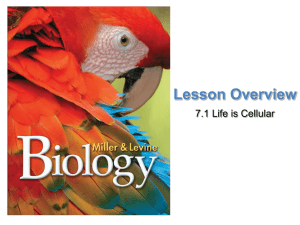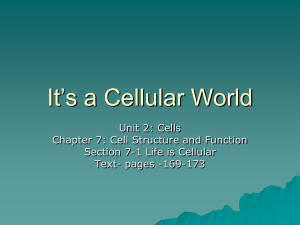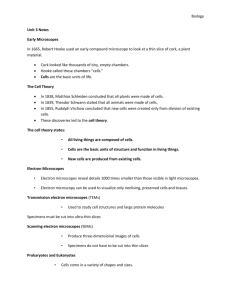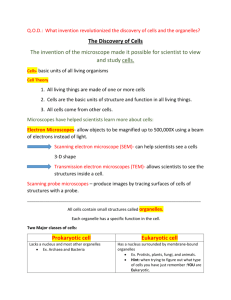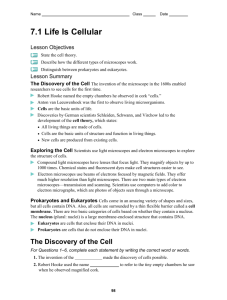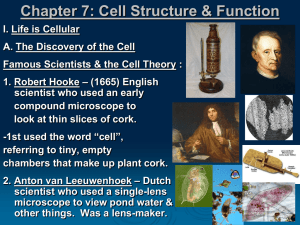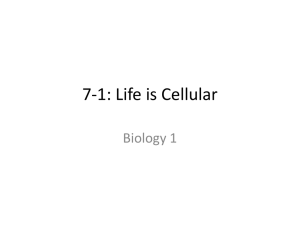(1 1) - SharpSchool
advertisement
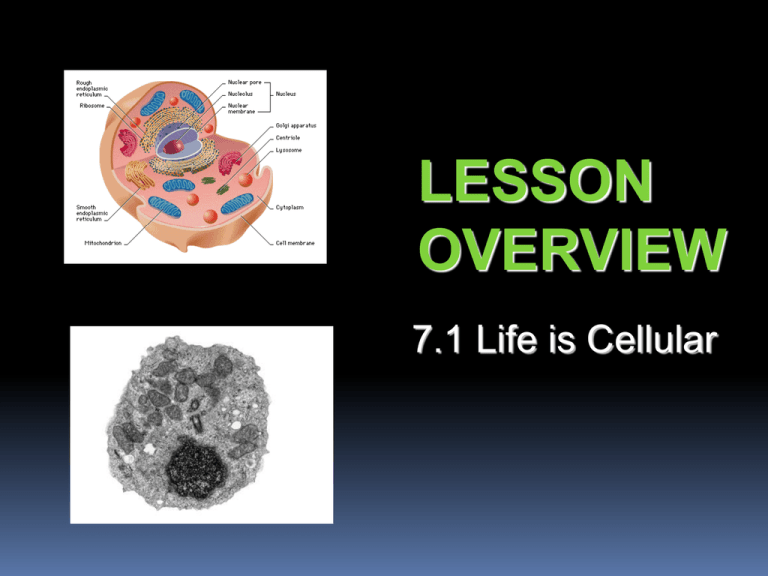
LESSON OVERVIEW 7.1 Life is Cellular THINK ABOUT IT What’s the smallest part of any living thing that still counts as being “alive?” Can we just keep dividing living things into smaller and smaller parts, or is there a point at which what’s left is no longer alive? As you will see, there is such a limit. The smallest living unit of any organism is the cell. Early Microscopes In 1665, Englishman Robert Hooke used an early compound microscope to look at a nonliving thin slice of cork, a plant material. Under the microscope, cork seemed to be made of thousands of tiny, empty chambers that Hooke called “cells”. The term cell is used in biology to this day. In Holland, Anton van Leeuwenhoek examined pond water and other things, including a sample taken from a human mouth. He drew the organisms he saw in the mouth—which today we call bacteria. The Cell Theory Soon after Leeuwenhoek, observations made by other scientists made it clear that cells were the basic units of life. In 1838, German botanist Matthias Schleiden concluded that all plants are made of cells. The next year, German biologist Theodor Schwann stated that all animals were made of cells. These discoveries are summarized in the cell theory, a fundamental concept of biology. The cell theory states: -All living things are made up of cells. -Cells are the basic units of structure and function in living things. -New cells are produced from existing cells. Exploring the Cell How do microscopes work? Most microscopes use lenses to magnify the image of an object by focusing light or electrons. Light Microscopes A typical light microscope allows light to pass through a specimen and uses two lenses to form an image. The first set of lenses, located just above the specimen, produces an enlarged image of the specimen. The second set of lenses magnifies this image still further. Because light waves are diffracted, or scattered, as they pass through matter, light microscopes can produce clear images of objects only to a magnification of about 1000 times. Electron Microscopes Light microscopes can be used to see cells and cell structures as small as 1 millionth of a meter. To study something smaller than that, scientists need to use electron microscopes. Electron microscopes use beams of electrons, not light, that are focused by magnetic fields. Electron microscopes offer much higher resolution than light microscopes. Electron microscopy can be used to examine only nonliving cells and tissues. Prokaryotes and Eukaryotes How are prokaryotic and eukaryotic cells different? Prokaryotic cells do not separate their genetic material within a nucleus. In eukaryotic cells, the nucleus separates the genetic material from the rest of the cell. Cells fall into two broad categories, depending on whether they contain a nucleus. The nucleus is a large membrane-enclosed structure that contains the cell’s genetic material in the form of DNA. The nucleus controls many of the cell’s activities. Prokaryotes and Eukaryotes Eukaryotes are cells that enclose their DNA in nuclei. Prokaryotes are cells that do not enclose DNA in nuclei. Prokaryotes Prokaryotic cells are generally smaller and simpler than eukaryotic cells. Despite their simplicity, prokaryotes grow, reproduce, and respond to the environment, and some can even move by gliding along surfaces or swimming through liquids. The organisms we call bacteria are prokaryotes. Eukaryotes Eukaryotic cells are generally larger and more complex than prokaryotic cells. Most eukaryotic cells contain dozens of structures and internal membranes. Many eukaryotes are highly specialized. There are many types of eukaryotes: plants, animals, fungi, and organisms commonly called “protists.”

